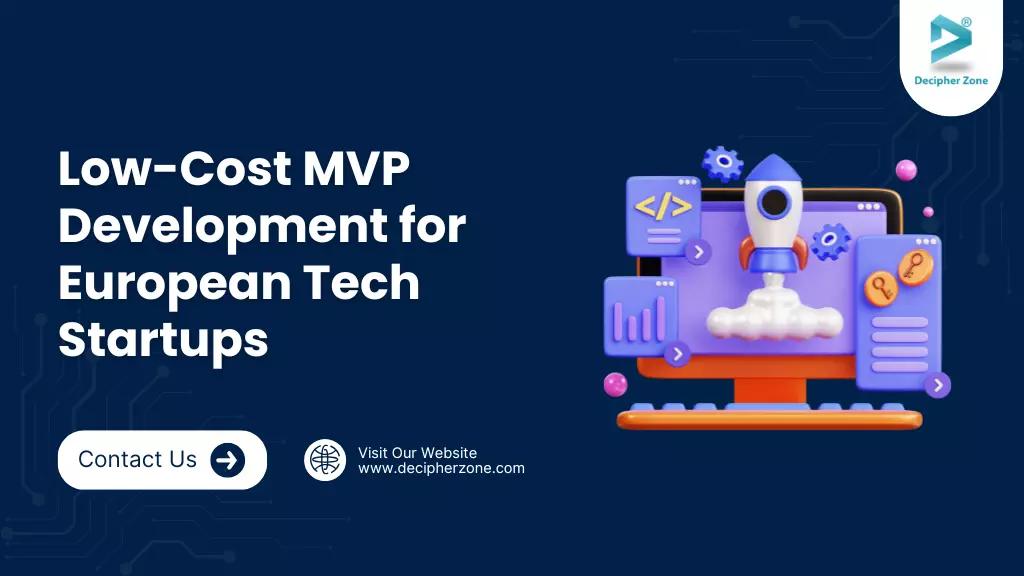Building an MVP under €10,000 helps European tech startups validate ideas quickly, reduce risk, and attract early users or investors. By focusing on core features, using no-code tools, and lean strategies, founders can launch efficiently and affordably.
Imagine launching a functional app or platform for under €10,000. For many startup founders in Europe, this is a game-changing approach to innovation. A Minimum Viable Product (MVP) is a stripped-down version of your product with just the core features needed to solve a problem and delight early users.
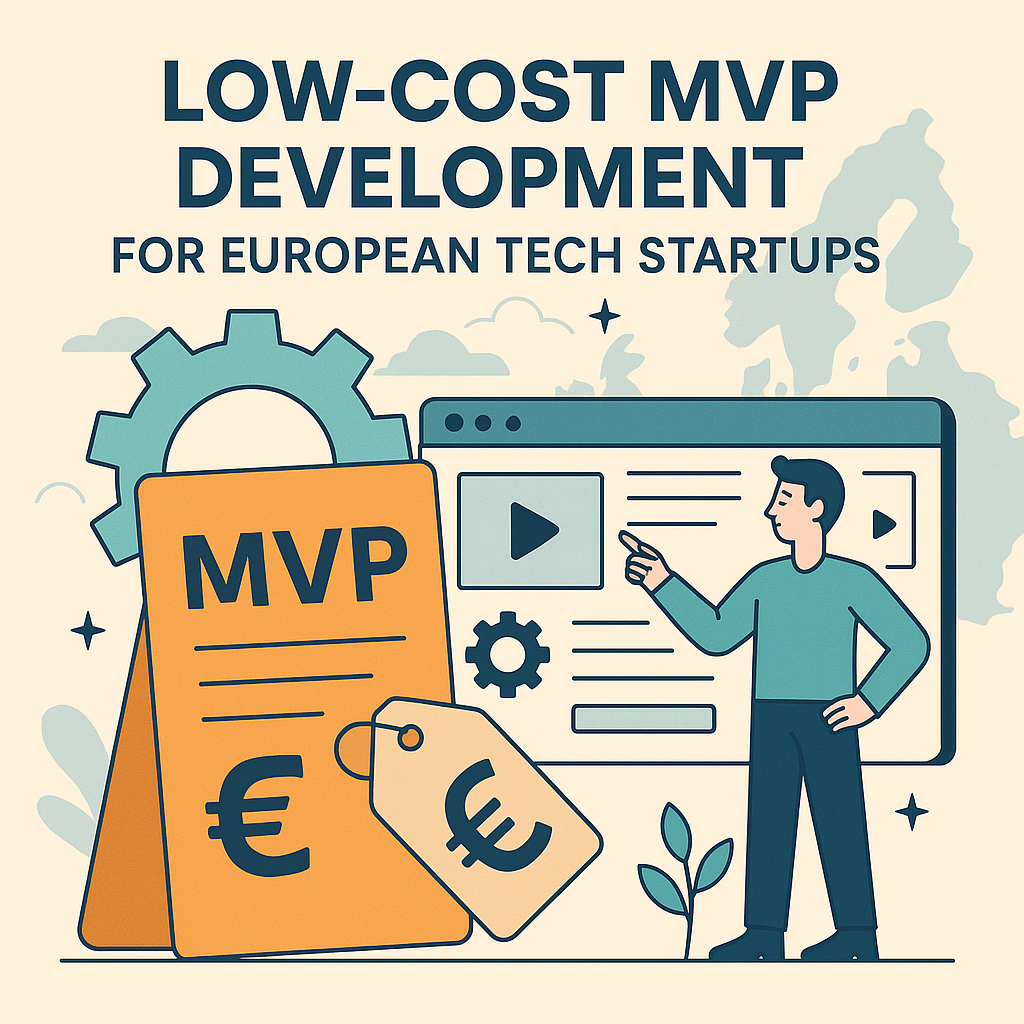
For the purposes of this guide, “low-cost” means MVP development under €10,000. This budget ceiling is notably frugal – considering that MVP development typically ranges from about $10,000 to $50,000 or more (roughly €9K–€45K). Yet, many European tech startups are proving that with smart strategies, you can launch an MVP on a shoestring budget.
Whether you’re a founder, CTO, investor, or a development agency partner, understanding how to deliver a viable product for under €10K is crucial. It allows startups to minimize risk, maximize learning, and make progress without waiting for a huge funding round.
Low-Cost MVP Development for Startups: A Comprehensive Guide
In this comprehensive guide, we’ll explore low-cost MVP development for web and mobile platforms, with a focus on Europe’s dynamic fintech and healthtech sectors. You’ll learn why building an MVP is often the smartest move for tech startups, how to do it affordably (without sacrificing quality or user experience), and what pitfalls to avoid.
We’ll also dive into real-world examples, expert insights, and actionable tips to ensure your MVP not only saves money but also sets the stage for future growth. Let’s start with the basics – and the big question “Why bother with an MVP in the first place?” – and then move on to the strategies that can make your under-€10K MVP a reality.
Read: Tips to Choose Offshore Software Development Team
Why a Low-Cost MVP is a Smart Move for European Startups
Here’s why focusing on a low-cost MVP (under €10K) is a smart move, especially for European tech startups:
-
Minimize Financial Risk
-
Faster Time to Market
-
Validate the Market and Core Idea
-
Iterate Based on User Feedback
-
Gain Investor Confidence with Less Spend
-
Adapt to Europe’s Diverse Market & Regulations
An MVP is a proven strategy for startup success. Coined in the Lean Startup methodology, the Minimum Viable Product represents the smallest functional version of your product that can still deliver value to users.
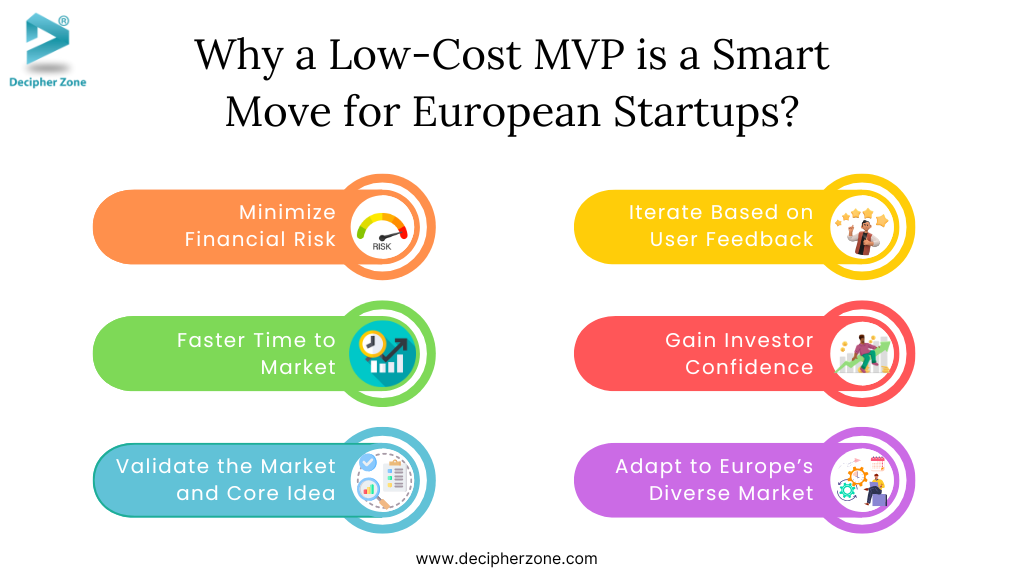
1. Minimize Financial Risk
Building a full product can burn through cash quickly – often six months and €150K+ for development in some cases. In contrast, an MVP approach contains costs by only developing core features. By keeping the budget under €10K, you ensure that a failed idea won’t sink the company financially. It’s easier to rebound from a small €5K–€10K experiment than a massive overspend.
2. Faster Time to Market
Traditional development might take months or years for a polished product. A lean MVP can be launched in a matter of weeks. Agile MVP development lets you put out a basic product quickly, test it with real users, and start learning immediately.
For example, an e-commerce startup might release a bare-bones site with just a product catalog and checkout to start selling in weeks rather than perfecting every feature. Speed is especially crucial in fast-moving tech sectors – being first or early in the market can be a big advantage.
3. Validate the Market and Core Idea
Perhaps the biggest benefit is learning whether users actually want what you’re building. Instead of guessing, you release a real (if limited) product and see how people use it. Did they sign up? Do they come back? Which features do they request? This real-world feedback is invaluable. It helps you avoid building features nobody needs.
In other words, an MVP prevents wasting money on the wrong solution. Dropbox famously tested interest with just an explainer video and a signup landing page before coding the app – that simple MVP attracted 70,000 potential users, validating demand with minimal development cost.
4. Iterate Based on User Feedback
An MVP not only answers “Do people want this?” but also provides insights on how to improve the product. Early adopters are usually forgiving of imperfections and eager to give input. By analyzing their behavior and soliciting feedback, you can refine the next iterations. Many giants started with austere MVPs.

Facebook’s first release was only open to one university and had just basic profile features. Airbnb started by listing a single apartment (the founders’ own living space) to see if anyone would actually pay to stay in a stranger’s home. These humble beginnings allowed them to pivot and polish the product based on real user data, not just assumptions.
5. Gain Investor Confidence with Less Spend
For European startups, attracting investment often requires proving there’s a market for your idea. Investors in Europe can be more cautious and metrics-driven than the “growth at all costs” mentality sometimes seen elsewhere. A functioning MVP demonstrates tangible progress and market validation.
It shows you, as a founder, have the ability to execute frugally and wisely. In fact, from an investor’s perspective, spending ~€10K over a couple of months to test an idea is seen as responsible stewardship, far preferable to betting €150K on an unproven concept.
An MVP provides evidence — user numbers, growth rates, engagement metrics — that can make your case far more convincing than a slide deck alone.
6. Adapt to Europe’s Diverse Market & Regulations
Europe is not one monolithic market; it’s a patchwork of countries, languages, and regulations. Launching an MVP in a single locale or a controlled environment helps test regional assumptions and ensure compliance before scaling up. For instance, a Finland-based fintech MVP can be used to verify that your app meets EU regulatory requirements on a small scale.
A healthtech MVP in, say, France can gauge user response and regulatory feedback (e.g. around GDPR and medical data) before you roll out across the EU. By starting small, you can adapt the product to different European user needs and legal landscapes without a huge upfront investment.
Strategies to Build an MVP Under €10,000
Here are key strategies from scoping your idea to choosing technology and talent that will help you develop a viable web or mobile MVP within a €10K budget:
-
Prioritize Core Features and Goals
-
Leverage No-Code and Low-Code Development Tools
-
Utilize Open-Source Frameworks and Existing Platforms
-
Find Cost-Effective Talent (Co-founders, Freelancers, Agencies)
-
Choose the Right Platform (Web vs. Mobile) Wisely
-
Keep Design Simple and User-Focused
-
Test, Launch Early, and Iterate Quickly
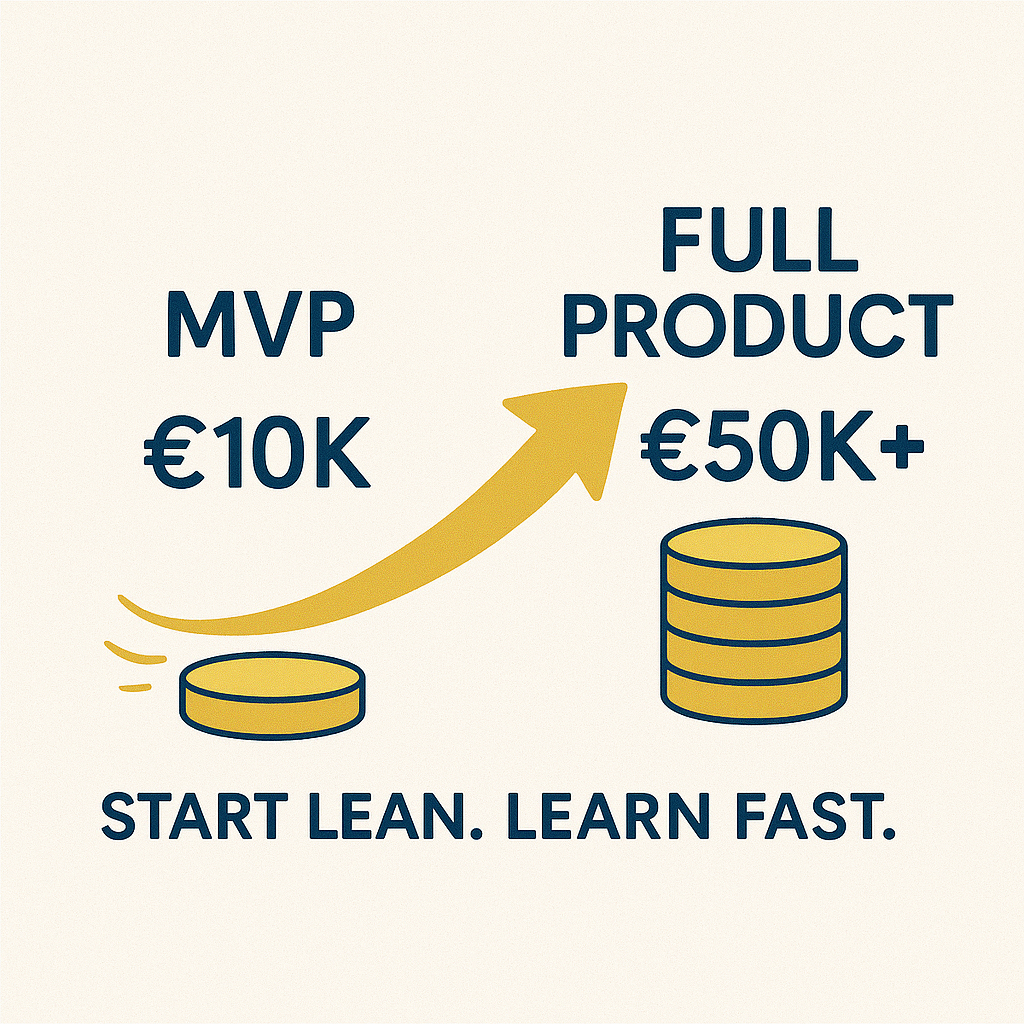
1. Prioritize Core Features and Goals
One of the biggest mistakes is trying to cram too many features into an MVP. To keep costs low, be ruthlessly selective about what goes into v1.0. Start by defining the single most important problem your product solves or the primary hypothesis you want to test.
Ask yourself: “What is the one thing this product must do to satisfy early users?” Focus on that, and cut everything else that’s not absolutely necessary.
Begin with a list of potential features, then categorize them into “must-haves,” “nice-to-haves,” and “future enhancements.” Only the must-haves belong in your MVP.
For example, if you’re building a new rideshare app, the core must-have might be a basic ride request and driver matching system. Fancy user profiles, loyalty points, or multi-tier pricing can come later. This approach keeps the scope contained.
It also aligns with expert advice, when Jeff Bezos started Amazon, he launched just an online bookstore one core feature to test if people would buy books online, before expanding into other products. Keeping your MVP tightly focused on one use-case or user flow dramatically reduces development time and cost.
Actionable tips for scoping your MVP:
[A] Write a one-sentence product statement
If you can’t summarize your MVP’s purpose in one sentence, it’s probably too complex. For instance: “This app allows university students to buy and sell used textbooks within their campus.” That clarity guides what features are truly needed (listings, search, messaging) and what’s not (advanced pricing algorithms, recommendation engine – not for MVP).
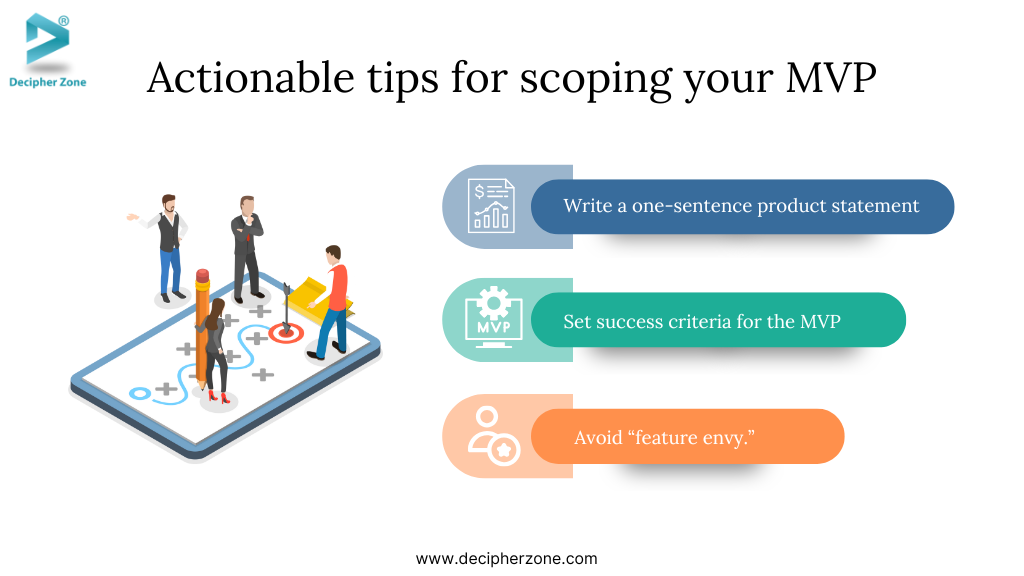
[B] Set success criteria for the MVP
Decide what outcome would validate your idea (e.g., 100 sign-ups in a month, or 20% of beta users completing a key action). This prevents feature creep – if a feature doesn’t directly contribute to achieving that outcome or testing that hypothesis, save it for later.
[C] Avoid feature envy
It’s tempting to match competitors feature-for-feature. Don’t. Your MVP should differentiate on one or two key points of value, not parity in every aspect. Often, users prefer a tool that does one job well over a bloated app. Keep it simple.
By laser-focusing on core features, you not only save money but also ensure a clear value proposition for your early adopters.
2. Leverage No-Code and Low-Code Development Tools
You no longer need a full engineering team to build a functional product. No-code and low-code platforms have matured to the point where founders with little to no programming experience can create web or mobile apps at a fraction of the cost and time. If your budget is under €10K, these tools can be a godsend.
Some popular options include:
[A] Visual App Builders
Platforms like Bubble, Adalo, or Webflow allow you to design web apps through drag-and-drop interfaces. They handle the code behind the scenes. For instance, Bubble can power user accounts, form submissions, database storage, and even payment processing – all without you writing a single line of code.
Founders have built marketplaces, SaaS tools, even fintech prototypes on such platforms for just the monthly subscription fee (often under €100). If you invest the time to learn the platform, you might spend only a few dozen euros and a few weeks to get a working prototype online. That’s incredibly cost-efficient.
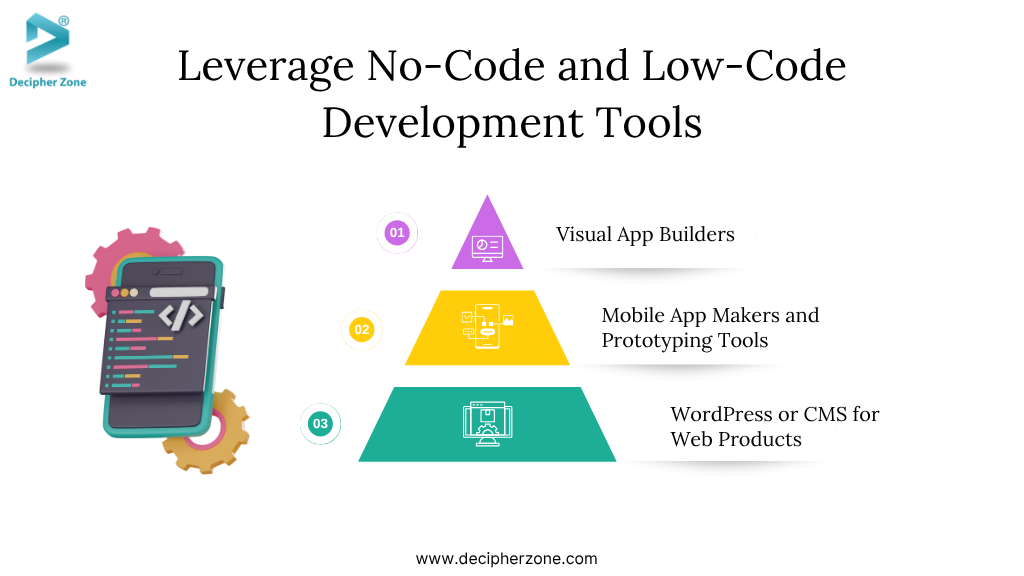
[B] Mobile App Makers and Prototyping Tools
Tools like Thunkable, AppGyver, or Glide can create basic mobile apps using configurations and spreadsheet data as a backend. Additionally, design/prototyping tools like Figma or InVision can craft interactive app mockups to simulate the user experience. While a prototype isn’t a fully functional app, it can be used in early testing or pitches to gauge user interest before you invest in actual coding.
[C] WordPress or CMS for Web Products
If your MVP is content or community focused, consider using a Content Management System with plugins instead of custom-building.
For example, if you’re validating a marketplace idea, a combination of WordPress + marketplace themes/plugins might launch your site for a few hundred euros. It won’t be highly custom, but it works as a quick interim solution to test the market.
Read: Why European Companies Prefer Remote Indian Teams
[D] No-code tools do come with trade-offs
they may be less flexible for complex features, and you might eventually outgrow them. But for MVP purposes, they can deliver 80% of the functionality at 20% of the cost. Many startups use no-code to prove the concept and even get first paying users, then rebuild with custom code later once they have revenue or investment.
3. Utilize Open-Source Frameworks and Existing Platforms
If custom coding is necessary, you can still save money by not reinventing the wheel. Open-source software and third-party services can dramatically cut development effort:
[A] Open-Source Libraries & Frameworks
Whatever functionality you need, chances are there’s an open-source project for it. Need user authentication and login? Don’t build from scratch – use libraries (e.g., OAuth packages or Firebase Authentication which has a generous free tier). Need a mobile app framework?
Consider React Native or Flutter, which are free to use and allow cross-platform mobile development. Using such frameworks can trim development costs by ~30–40%since you write one set of code for both iOS and Android, effectively doubling your reach with less work.
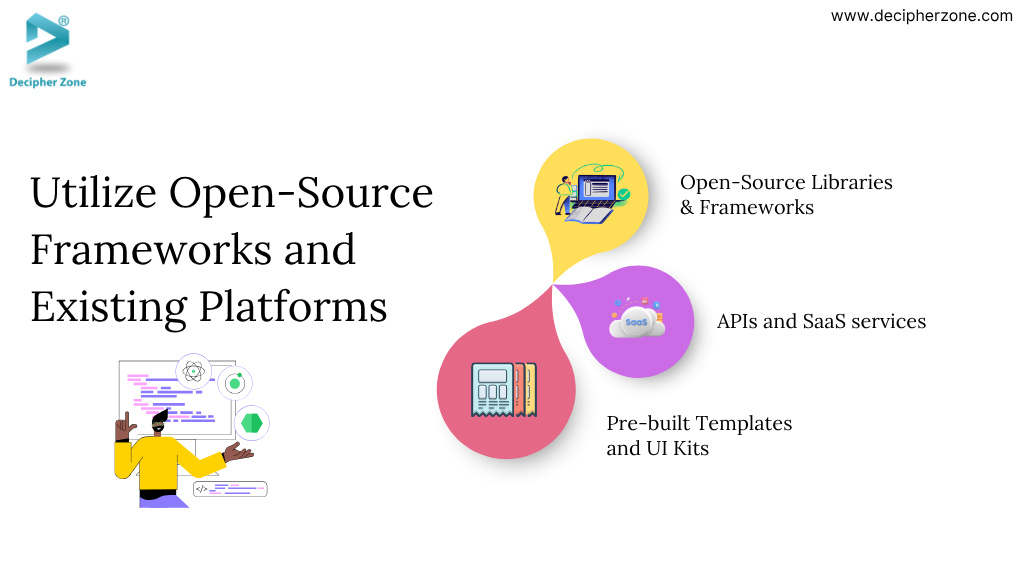
[B] APIs and SaaS services
Leverage external services for heavy lifting. For example, a fintech MVP can integrate with a third-party payment gateway or open banking API rather than building its own payment processing. A healthtech MVP that needs video calls could use a service like Twilio or Zoom’s API instead of coding a video server.
Many of these services have free or pay-as-you-go pricing that stays cheap at low scale. By plugging into existing platforms, you speed up development and often get a reliable, secure solution out-of-the-box (important for things like payments or data storage).
[C] Pre-built Templates and UI Kits
Design and frontend development can be a big chunk of cost. Using pre-made templates (for websites, admin dashboards, mobile UI components, etc.) can save dozens of hours of a designer/developer’s time. For instance, purchasing a responsive website template for €50–€100 or using a free UI kit from platforms like Bootstrap can give your MVP a decent look and mobile-friendly behavior instantly.
One startup founder recounted that they spent only $64 on a website template for their MVP, instead of custom-coding the whole front end – a huge cost saver. It may not be a unique design, but it works and looks professional enough for early users.
Using open-source and third-party components isn’t just about saving coding time; it also often means benefitting from community-tested, reliable code and infrastructure. This can improve your MVP’s stability without additional cost.
4. Find Cost-Effective Talent (Co-founders, Freelancers, Agencies)
Labor is usually the most expensive part of development. However, there are clever ways to get the talent you need without blowing your €10K budget:
[A] Bring in a Technical Co-Founder (Equity vs. Salary)
If you’re a non-technical founder, one way to avoid large upfront costs is to find a co-founder who can build the MVP in exchange for equity in the company. Many successful startup stories involve a “hustler” (business founder) paired with a “hacker” (technical founder).
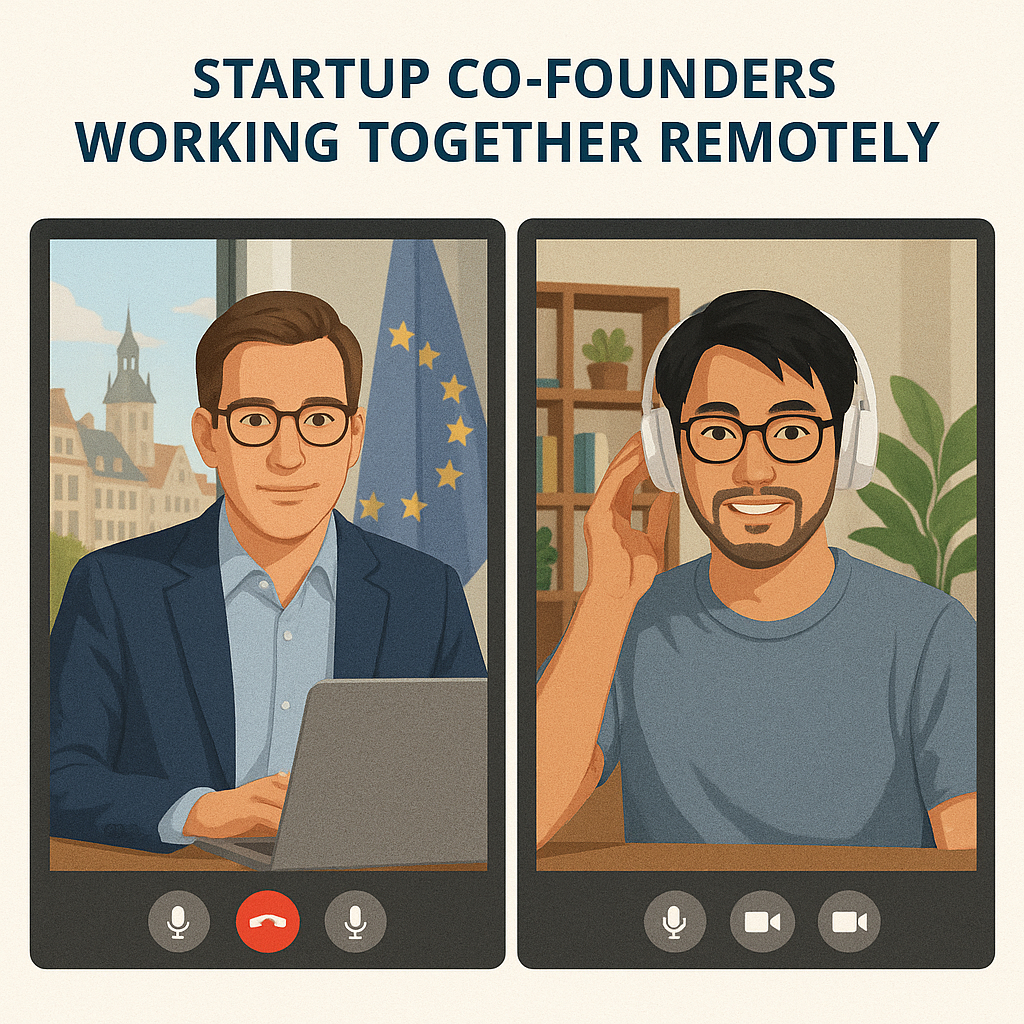
Just be sure to offer a reasonable equity slice (e.g., 10–20%, depending on their role and commitment) – enough to motivate them, but not so much that it scares off future investors.
A committed technical co-founder essentially means you have development talent “in-house” working for future payoff instead of immediate pay. It’s important to align on vision and work ethic since you’re effectively bringing on a partner, not just a contractor.
[B] Hire Freelancers or a Small Agency
If equity partnership isn’t feasible, consider freelance developers or boutique development agencies, especially those in regions with lower rates. Development rates vary widely globally.
For example, North American or Western European developers might charge €80–€150/hour, whereas highly skilled developers in Eastern Europe might charge €15–€60/hour for comparable quality.
This cost difference can make an MVP achievable within €10K. For instance, a 2-month MVP build at €50/hour is ~€16,000 in developer fees, which is over budget but at €30/hour it’s €9,600, which fits. Look for talent hotspots in Europe (Poland, Romania, the Baltics, etc.) or globally (India, Southeast Asia) where your budget goes further. Websites like Upwork, Toptal, or regional tech freelance networks can help find vetted professionals.

[C] Negotiate a Fixed-Price MVP Contract
When dealing with freelancers/agencies, one way to control costs is to define the MVP scope clearly and agree on a fixed project fee. This shifts the risk of overruns to the developer and ensures you don’t get an unpleasant surprise if development takes longer. Many agencies offer fixed-price MVP packages.
Be cautious: fixed bids require detailed specs to avoid misunderstanding, and any change in scope needs renegotiation. However, it provides cost certainty. An alternative is a “MVP sprint” model – e.g., pay a team for 4 weeks of work to build as much as they can of your core features. Time-boxing the effort naturally caps cost.
[D] Leverage Interns or Student Developers
If the requirements are not extremely advanced, you might tap into university talent. Computer science students or new grads often seek real-world projects to gain experience. They might build an MVP for a very modest stipend or for academic credit/portfolio.
Quality can be hit-or-miss and they’ll need guidance, but it’s another avenue. Some European startup accelerators and hackathons connect students with startups for MVP projects at low cost. This approach works best if you as the founder can project-manage or even contribute to coding, essentially acting as the mentor while getting the work done cheaply.
[E] Split the Work to Match Skills & Rates
Not all development tasks require a senior (expensive) developer. For example, hire a junior or mid-level freelancer for straightforward coding, and bring in a senior developer only for critical architecture or code reviews.
Or use a designer for UI screens but a cheaper web developer to implement them. This way you allocate your budget where it has the most impact (e.g., core system design security – get an expert; simple page creation – a junior can handle).
When working with limited-budget talent, keep communication very clear. Provide a detailed product requirements document or user stories (if you wrote specs when using no-code prototypes, those can be repurposed). Also, be realistic about timeline: if you can’t afford more hands, it might take longer. Plan accordingly so you don’t end up paying extra due to rush or overtime.
Read: How Much Does It Cost to Outsource an App Development
Finally, treat external developers as partners. Share your vision and excitement for the project – people are often willing to go the extra mile or negotiate rates when they feel genuinely involved in building something innovative. Many agencies actually specialize in MVPs for startups and understand the constraints, offering consulting on how to get the best bang for your buck.
5. Choose the Right Platform (Web vs. Mobile) Wisely
Launching on multiple platforms (web, iOS, Android) at once can be a budget killer. To keep an MVP under €10K, it’s usually best to start with a single primary platform that makes the most sense for your product and target users:
[A] Web MVP First
A web application (or even a simple responsive website) is often the cheapest and fastest to build. Web apps are platform-agnostic – users on any device can reach you through the browser, which saves you from building separate native apps initially. If your idea doesn’t require smartphone-specific features, consider making the MVP a web app.
For instance, a marketplace, a SaaS tool, or a content platform can run in a browser and serve both desktop and mobile users via a responsive design. You avoid app store deployment hassles and updates are instant for all users.
[B] Mobile App MVP
If your core use-case is mobile-centric (e.g. a fitness tracker using sensors, a ride-hailing app relying on GPS), you might need a native mobile app. In this case, pick one platform (iOS or Android) for the MVP, not both.
Choose based on where your early adopters are likely to be. In Europe, Android has a larger user base in many countries, but iOS users tend to spend more on appsit depends on your target demographic.
By doing one platform first, you cut the initial development work in half. You can reach the other platform’s users in subsequent phases or use a basic web fallback for them temporarily.
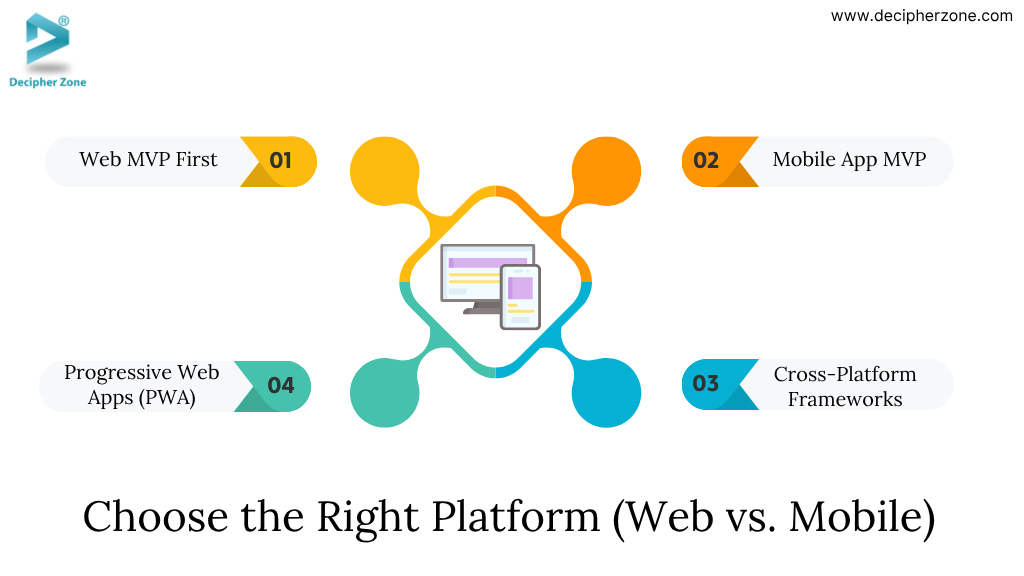
[C] Cross-Platform Frameworks
As mentioned earlier, frameworks like Flutter or React Native allow you to code once and deploy to both iOS and Android. This is a popular compromise to cover both platforms without doubling cost. Keep in mind cross-platform apps may not achieve the absolute polish or performance of fully native apps, but for an MVP that’s usually fine.
Many startups have shipped MVPs (and even later versions) on React Native to save time and money. This approach can reduce overall cost by around 30%+ compared to two separate native codebases, though it’s wise to have at least one developer experienced in the chosen framework.
[D] Progressive Web Apps (PWA)
A PWA is essentially a web app that can behave like a mobile app (installable, offline access, push notifications). Building a PWA means your web MVP can also function almost like a native app for mobile users.
This is another cost-effective route – you maintain one codebase (mostly web tech like HTML/JS) and still give mobile users an app-like experience. For example, an early-stage news reader startup could make a PWA instead of separate apps; users can “Add to Home Screen” and it’ll feel like an app.
The key is don’t bite off more than you can chew platform-wise. It’s better to deliver a great experience on one platform than a broken or mediocre one on three. Remember, the MVP is not your final form – it’s to validate your idea. If it works and users love it, you’ll have the justification (and hopefully resources) to expand to other platforms later.
Communicate to users that this is an early version and more platforms/features may come with success. Early adopters are often understanding if, say, an Android version isn’t available at first – some might even switch to whatever platform is available just to try your product if the value is compelling enough!
6. Keep Design Simple and User-Focused
Good design is important for user experience, but you don’t need a pixel-perfect, award-winning design for an MVP. On a limited budget, aim for a clean, usable interface – nothing fancy, just functional. Here are some tips to achieve a decent design without overspending:
[A] Use Basic Layouts and Standard UI Elements
This is not the time for bespoke, brand-heavy design languages. Stick to common UI patterns that users already understand (forms, tabs, nav bars, etc.).
By using framework defaults (like a Bootstrap theme or Google’s Material Design components), you get a reasonably attractive UI with minimal effort. It might look somewhat generic, but it will be familiar and easy to navigate, which is what you need early on.
[B] Limit the Number of Screens/Pages
Just as you trimmed features, trim the scope of design. If possible, design only a handful of screens. For a mobile app, maybe you have 3-5 primary screens (e.g., login, main dashboard, one content screen, one settings/profile). For a web app, maybe a single-page application or a simple multi-step flow. Fewer screens mean fewer things to design and code.

[C] Don’t Overpay for High-End Design
It’s tempting to hire a top-tier designer to make your app gorgeous. But many founders in hindsight regret spending thousands on design for an MVP that’s going to change anyway. One entrepreneur who built an MVP under $10K shared that they paid $6,500 for an initial UI design of ~5 screens – which was far too much for an MVP.
They ended up redesigning multiple times later, meaning that money wasn’t well spent. The lesson: good-enough design is okay for now. You can always re-skin the app after you validate the concept. If you lack design skills, consider affordable options like hiring a junior designer, using pre-made UI kits, or even finding a design student who’ll do it for experience.
[D] Focus on UX over Visual Polish
While fancy graphics can wait, do make sure the user experience flows smoothly. It costs nothing to ensure that your navigation is logical, the buttons are labeled clearly, and the onboarding (if any) is concise and helpful. C
onduct a few quick usability tests with friends or colleagues this can catch glaring issues early. A clunky MVP will fail not because users mind that it isn’t pretty, but because they can’t figure out how to use it. So allocate time/budget to refine the UX through feedback, rather than to adorn the UI with custom artwork or animations.
By keeping design simple, you save money and reduce development time (since overly custom designs often require more effort to implement). Aim for a look that says “minimalist startup” rather than “finished corporate product.” Early adopters are generally forgiving of a sparse interface as long as it solves their problem.
You can even be transparent about it some startups label their product “Beta” or “Early Access” which implicitly tells users to expect a basic design and the occasional glitch. In fact, involving users in the design improvement process (e.g., asking for UI/UX suggestions) can increase their engagement and buy-in.
7. Test, Launch Early, and Iterate Quickly
With your MVP built, the final steps – and a crucial part of low-cost development – are testing and iteration. Quality assurance (QA) testing is something you should do thoroughly, even on a budget. Bugs and crashes can derail user interest fast. You don’t need a dedicated QA team as a founder or CTO, you (and your team) should spend time using the product like an end-user would.
Fix the critical bugs – it’s cheaper to catch them now than to deal with angry users later. Also, consider a small closed beta with friendly users to get feedback on any confusing elements.
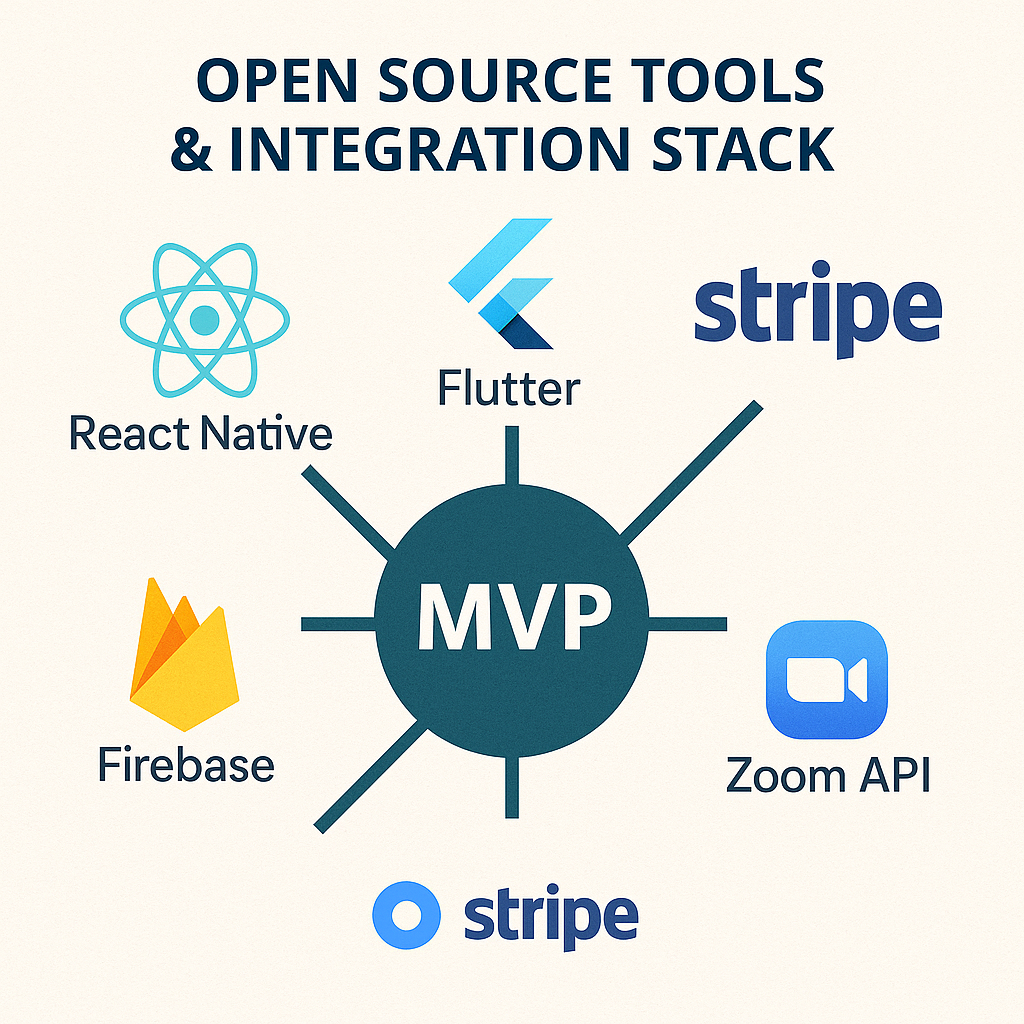
Once things are stable: don’t delay launch for perfecting details. As the saying goes, “If you’re not embarrassed by the first version of your product, you launched too late.” Get the MVP out there in front of real users as soon as it delivers the core value. Every day you polish unnecessarily is a day without learning from real users (and potentially a day someone else works on a similar idea).
After launch, closely monitor how users interact with your MVP. Use analytics (even free ones like Google Analytics or Firebase Analytics) to track usage patterns. Which features are being used? Where do users drop off? Gather qualitative feedback too talk to some users if possible, or send out a short survey. This data is like gold – and it didn’t cost much to obtain since you’ve built a lean product. Now, use it to iterate.
Remember, an MVP is the beginning. Be prepared to iterate rapidly: fix the UX pain points, add a high-demand feature that everyone’s asking for (and drop things people don’t seem to care about). This iterative cycle is at the heart of the MVP philosophy: build → measure → learn → adjust. It ensures you invest further only in directions that have proven merit.
Read: Estimate the Cost of Custom Software Development
Also, keep an eye on your budget during iteration. It’s easy to justify “just one more tweak” and suddenly you’ve spent another €5K. Instead, schedule your iterations in sprints and budget them.
Finally, celebrate the small wins. Did your MVP get its first 100 users? Did it help you secure a meeting with an investor or a pilot customer? Those milestones are proof that a low-budget approach can deliver meaningful progress. Many great startups began exactly this way – with a modest MVP that validated their vision. By iterating quickly, they then turned that humble start into a platform for scaling up.
With the strategies above, you can significantly tilt the odds in favor of delivering a successful MVP within €10,000. Now, let’s look at how these principles apply to two hot industries in Europe – fintech and healthtech – where lean MVPs are not only possible but increasingly common.
Low-Cost MVPs in Fintech: Tips for Financial Startups
Fintech is one of Europe’s most vibrant tech sectors from London’s fintech hub to emerging cryptocurrency startups across the EU. However, building fintech products can be complex given the heavy emphasis on security, data, and compliance. The good news is that even in fintech, you can start with a low-cost MVP that demonstrates your concept without huge upfront investment. Here’s how:
1. Narrow the Financial Use-Case
Fintech ideas often aim to disrupt big, multifaceted systems (banking, lending, insurance, etc.), but an MVP should target a single wedge issue. For example, rather than creating a full digital bank from day one, build an MVP for one feature like automatic budget tracking, a peer-to-peer payment splits app, or a simple investment robo-advisor for ETF portfolios.

By focusing on a niche, you reduce scope. Revolut, for instance, started just with multi-currency prepaid cards and a currency exchange feature – a far cry from the super-app it is today. That initial narrow product was manageable to build and proved demand for convenient currency exchange.
2. Leverage Banking APIs and Existing Infrastructure
Europe’s regulatory environment can actually help here with PSD2 and open banking, banks are required to provide APIs for third-party apps. This means your fintech MVP can often ride on top of existing bank accounts or payment networks instead of handling money directly.
For example, rather than building a payments system from scratch, use a well-established service like Stripe or Adyen for payments (they handle compliance, you pay small fees per transaction). If your app needs to read bank data, use an aggregator like Tink or TrueLayer to connect to user bank accounts securely.
These integrations have costs, but many have free tiers for development or small usage. By outsourcing the “hard stuff” (payments processing, KYC/identity verification, etc.) to specialized providers, your MVP development is mostly about the user-facing logic and design.
3. Prioritize Security and Compliance Basics
Trust is crucial in fintech. Users won’t touch your product if it looks shady or careless with their financial data. Even on a low budget, implement basic security best practices: use HTTPS encryption everywhere, never store passwords in plain text (rely on standard auth libraries), and if handling any personal data, be transparent and compliant with privacy laws like GDPR.
You don’t need to build military-grade security from scratch (in fact, don’t try – use trusted frameworks), but do cover the fundamentals. Also, consider starting in a “sandbox” mode – some fintech ideas (like stock trading, crypto exchanges, etc.) can launch in a test/demo mode with fake money to simulate the experience.
This lets you sidestep certain regulatory requirements while you validate the idea. For instance, a peer-to-peer lending MVP could initially match lenders and borrowers and simulate loans without moving real funds, just to gauge interest and behavior.
4. Use Manual Processes to Simulate Automation
A classic MVP trick, applicable to fintech, is the “Wizard of Oz” approach – make your app seem automated, but do certain things manually behind the scenes initially. Suppose you have an app that promises to find users the best mortgage rates.
Instead of integrating with dozens of bank systems from the start, your MVP could simply have users input their info, then you manually research the best rate and return the result to the app (perhaps via an admin interface or even email).
Users get the service as if it were fully automated, but you saved months of integration work. If people love it, you’ve proven value, and then you can invest in automation. Many fintech startups begin this way – it’s low-tech, but it works and is cheap.
5. Fintech Example Budgeting App MVP
Imagine a fintech startup in Berlin wants to help users save money via AI-driven budgeting. A full product might involve bank account integration, AI analysis, personalized recommendations, etc.
But an MVP under €10K could be as simple as: a mobile-friendly web app where users manually upload a CSV of their expenses or connect via a single open banking API, then the app displays analysis and suggestions with basic rule-based logic.
The heavy AI can be faked with preset rules or a very simple algorithm. If users engage and save money using your basic tips, that’s validation. One could build that basic app with a small team or a no-code tool, plus perhaps €1000 for API fees and hosting – well within budget.
Fintech MVPs must instill confidence, so design your user onboarding and messaging to emphasize security and credibility (even if you’re small). Obtaining a relevant certification or partnering with a known institution for the MVP phase can boost credibility too.
For example, being in a local fintech sandbox program or accelerator can reassure users and investors that your tiny MVP is serious and adheres to standards.
Read: Mobile App Development Cost
Low-Cost MVPs in Healthtech: Tips for Healthcare Startups
Healthtech is another booming industry in Europe, ranging from telemedicine platforms to health & wellness apps and medical AI. Healthcare technology comes with its own set of challenges like patient privacy, regulatory approval, and the need for high reliability. Still, scrappy entrepreneurs are finding ways to launch healthtech MVPs without hefty funding. Here’s how you can do it:
1. Focus on a Single Health Problem
Just as with fintech, narrowing your focus is vital. Instead of a comprehensive health platform, think of the one pressing problem you can address initially. For example, your grand vision might be an app that tracks and improves overall patient wellness – but an MVP might zero in on one aspect, such as a medication reminder app or a basic symptom checker for a specific condition.
By confining the scope, you reduce what needs to be built and you can target a specific user group (e.g., an app just for diabetics to log glucose readings and get diet tips). Solving one problem well builds credibility and user base which you can later leverage to broaden the product’s scope.
2. Use Readily Available Tech for Complex Functions
Healthtech often involves complex functionalities like video consultations, AI diagnosis, or hardware integration. For MVP, lean on existing solutions.
If you need video calling (for telehealth), use a secure video API or even something as simple as embedding a Zoom or Teams call link within your app – so doctors and patients just click to meet on Zoom, which handles the video flawlessly.
.avif)
If you’re doing an AI symptom checker, perhaps start with a rules-based engine or a service like a basic chatbot framework instead of a full ML model. For hardware (say a wearable or IoT medical device), consider utilizing smartphone sensors if possible or use a generic fitness tracker’s data via its SDK rather than developing new hardware.
This way, your MVP demonstrates the concept using off-the-shelf tech. Custom, sophisticated tech can be part of version 2 once you prove people actually want your solution.
3. Handle Data Privacy and Compliance from Day One:
Health data is sensitive, and European users (as well as regulations) rightfully demand care with it. Ensure your MVP at least follows GDPR guidelines for personal data protection: get user consent for data collection, store data securely (likely in an encrypted form on a reputable cloud service), and provide a basic privacy policy explaining how you use data.
If your app deals with medical advice, be cautious with claims – possibly include disclaimers that it’s not a certified medical device (unless you’ve gone through certification).
One strategy is to launch the MVP as a “pilot” or “beta” in partnership with a clinic or under a research umbrella, which can sometimes give a bit of regulatory breathing room if it’s viewed as a study rather than a commercial launch.
Regardless, show users that you take their privacy seriously, even if you’re small. Use known secure services (for example, building on AWS or Azure which have compliance certifications) so you don’t have to invent compliance infrastructure yourself.
4. Engage Healthcare Professionals Early
On a tight budget, you might not afford to have doctors or specialists on staff, but you can involve them in lean ways. For instance, have a doctor advisor review your content or logic (perhaps in exchange for a small equity or a modest honorarium) to ensure your MVP isn’t giving harmful advice.
If your app connects patients to providers, you might initially onboard just a few friendly doctors or therapists who agree to test the service. With minimal cost, you get professional insight and also credibility (“we developed this with guidance from a certified physician”). Healthtech users often look for signs that medical professionals are involved.
5. Healthtech Example – Teletherapy MVP
Suppose you want to build a mental health teletherapy startup. The full vision includes patient management, video sessions, AI-driven progress tracking, etc. But an MVP under €10K could be simply: a booking website that matches users to a small network of therapists for video calls, plus a basic chat or notes feature.
You might not even need a custom video solution – schedule sessions via the site, and conduct them on Skype/Zoom. The “platform” might initially be a manual coordination: the site gathers requests, you as the founder match them to one of say 5 therapists you’ve partnered with, and email both parties the Zoom link.
It’s not fully automated, but from a user’s perspective, it feels like an integrated service. This could be built with a basic web template and some off-the-shelf calendar or booking plugin.
For a few thousand euros (or even less if largely no-code), you’ve launched a telehealth MVP that validates demand for online therapy in your target region. If uptake is good (people are booking and having sessions), you then invest in developing a more automated platform and scaling up the provider network.
6. Mind the Feedback Loop with Users and Providers
In healthtech, both the end-users (patients) and the professionals (doctors, therapists, etc.) are your “users.” Use the MVP phase to collect feedback from both sides. It can be as simple as a follow-up survey or a check-in call after a consultation.
This qualitative feedback doesn’t cost much to gather and can guide what features to build next (for example, therapists might say they need a better notes system, or patients might request an integrated reminder for follow-ups).
Healthtech MVPs require balancing innovation with caution. Lives and wellbeing are at stake, so you can’t be reckless, but you can be lean. Plenty of successful European healthtech startups (like nutrition tracking apps, basic diagnostic tools, etc.) began with very limited functionality, essentially testing one hypothesis about health outcomes or user engagement.
Once they proved people found it useful – even if it was a barebones version – they could then raise funds or reinvest revenue to clear the regulatory hurdles and develop the full-fledged product.
Read: Tools and Platforms for Efficient Software Development
Conclusion
Building a successful tech startup doesn’t have to start with millions in funding – it can begin with a clever, low-cost MVP that validates your vision. European startup founders have a unique opportunity to combine the region’s rich tech talent and innovation with a pragmatic, lean approach to product development.
By focusing on the essentials and making smart use of modern tools and resources, you can launch a web or mobile MVP for under €10,000 that punches well above its weight.

Throughout this guide, we saw how keeping an MVP lean forces you to hone in on what truly matters: delivering real value to real users. We discussed strategies like trimming features to the core, embracing no-code and open-source, tapping affordable talent pools, and staying agile post-launch.
We also explored how even complex domains like fintech and healthtech can start with simple, budget-friendly MVPs – from a basic currency exchange app to a barebones telehealth service – as long as they solve a clear problem and respect the user’s trust.
Each step of developing your MVP, you’ve been engaging with your market, gaining experience, and demonstrating expertise in your niche. These are the foundations of a startup that can grow sustainably.
Frequently Asked Questions (FAQ)
Q1. What is an MVP in startups?
A: An MVP (Minimum Viable Product) is a basic version of a product with core features used to validate an idea with real users.
Q2. How much does MVP development cost in Europe?
A: Low-cost MVPs can be built for under €10,000 using lean methods, no-code tools, and focused features.
Q3. How long does it take to build an MVP?
A: Most MVPs can be developed in 4–8 weeks, depending on complexity and resources.
Q4. Can I build an MVP without a developer?
A: Yes. No-code platforms like Bubble or Webflow allow non-technical founders to build MVPs affordably.
Q5. Should I build a web app or mobile app MVP?
A: Start with a web app for broader access unless your idea relies heavily on mobile features.
Q6. Is a low-cost MVP good enough to get investors?
A: Yes. A working MVP with early traction is often more convincing to investors than just a pitch deck.
Q7. How can I ensure GDPR compliance for my MVP?
A: Use GDPR-compliant tools, get user consent, and avoid collecting unnecessary personal data.
**Disclaimer: Some images used in this article have been generated with the assistance of AI.

